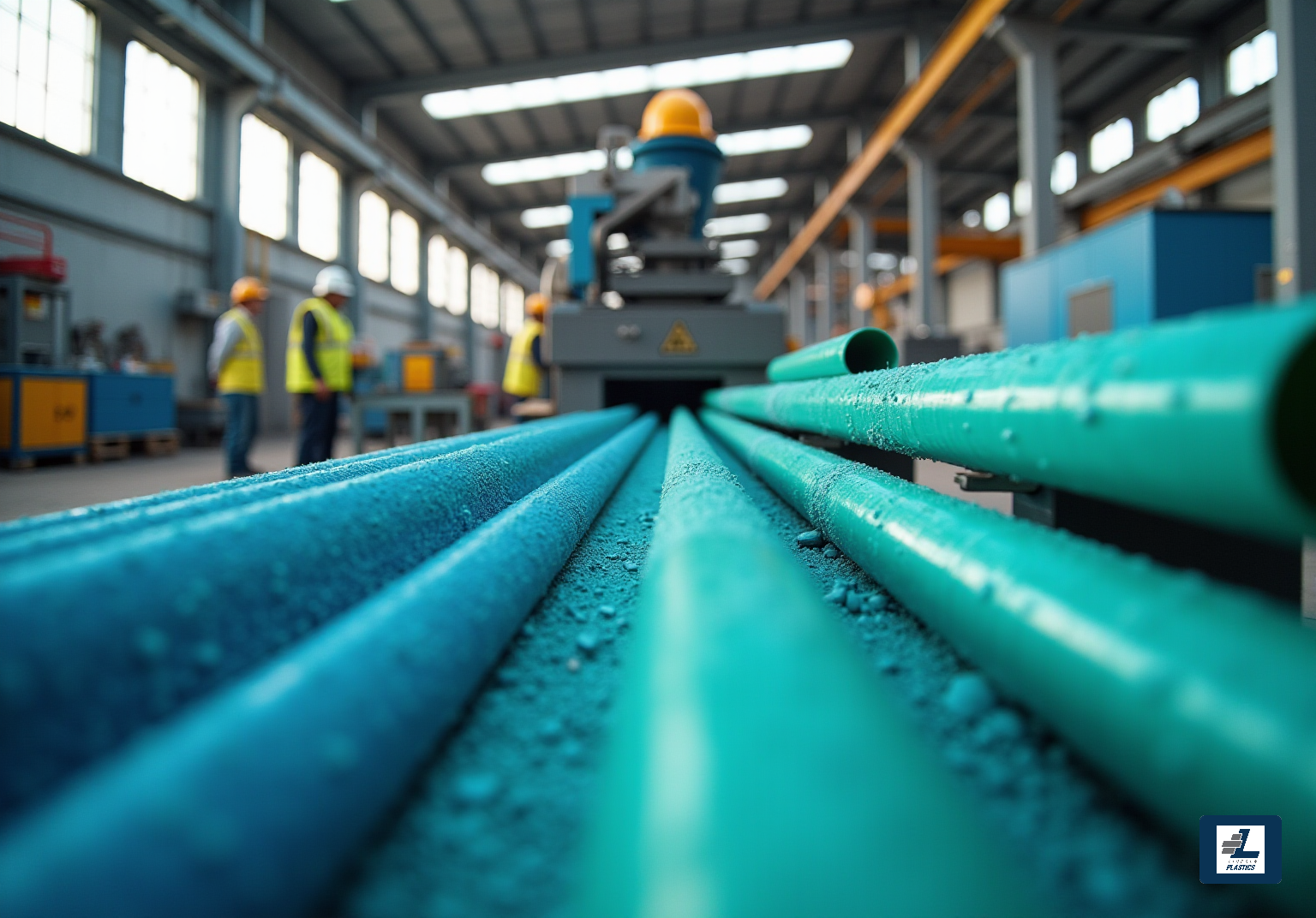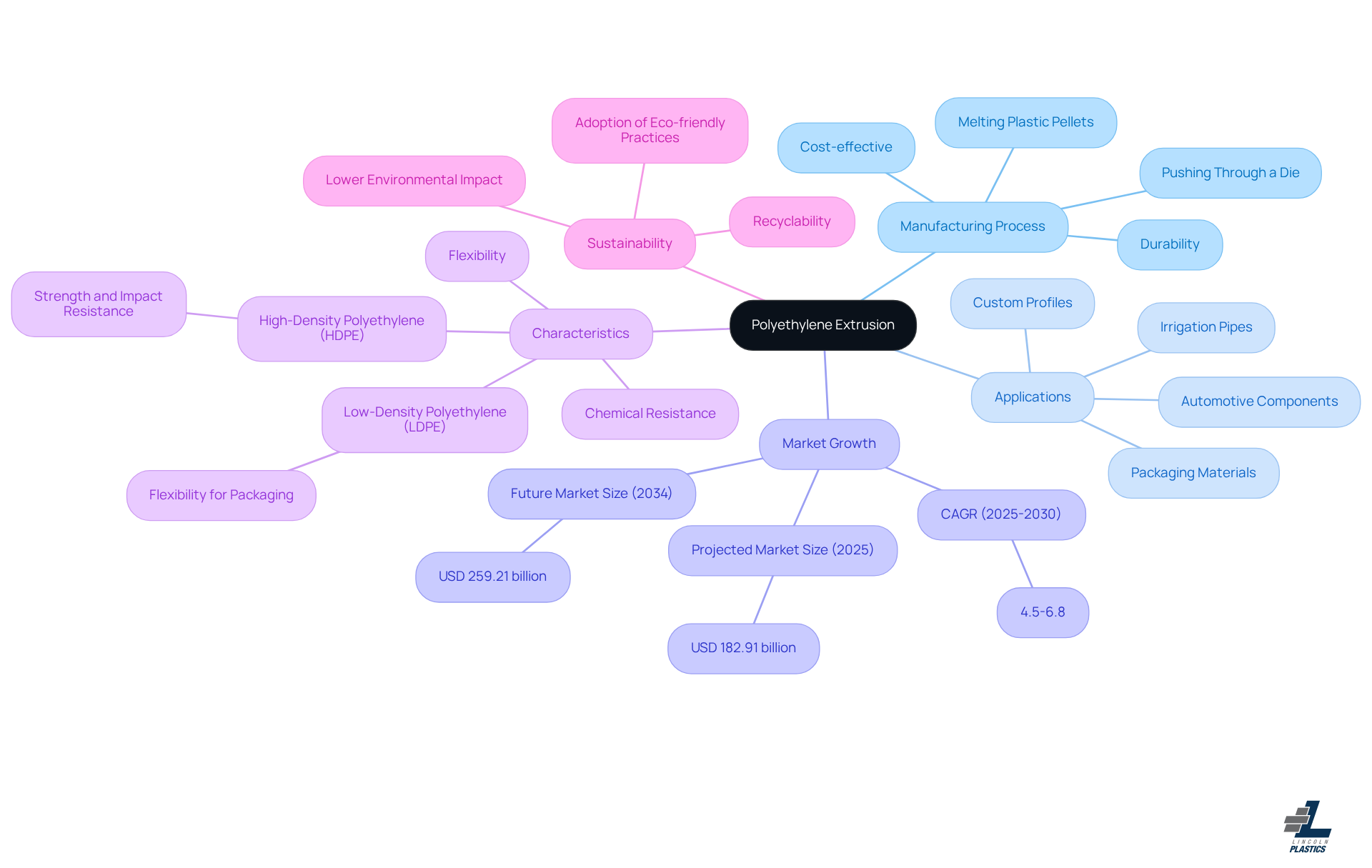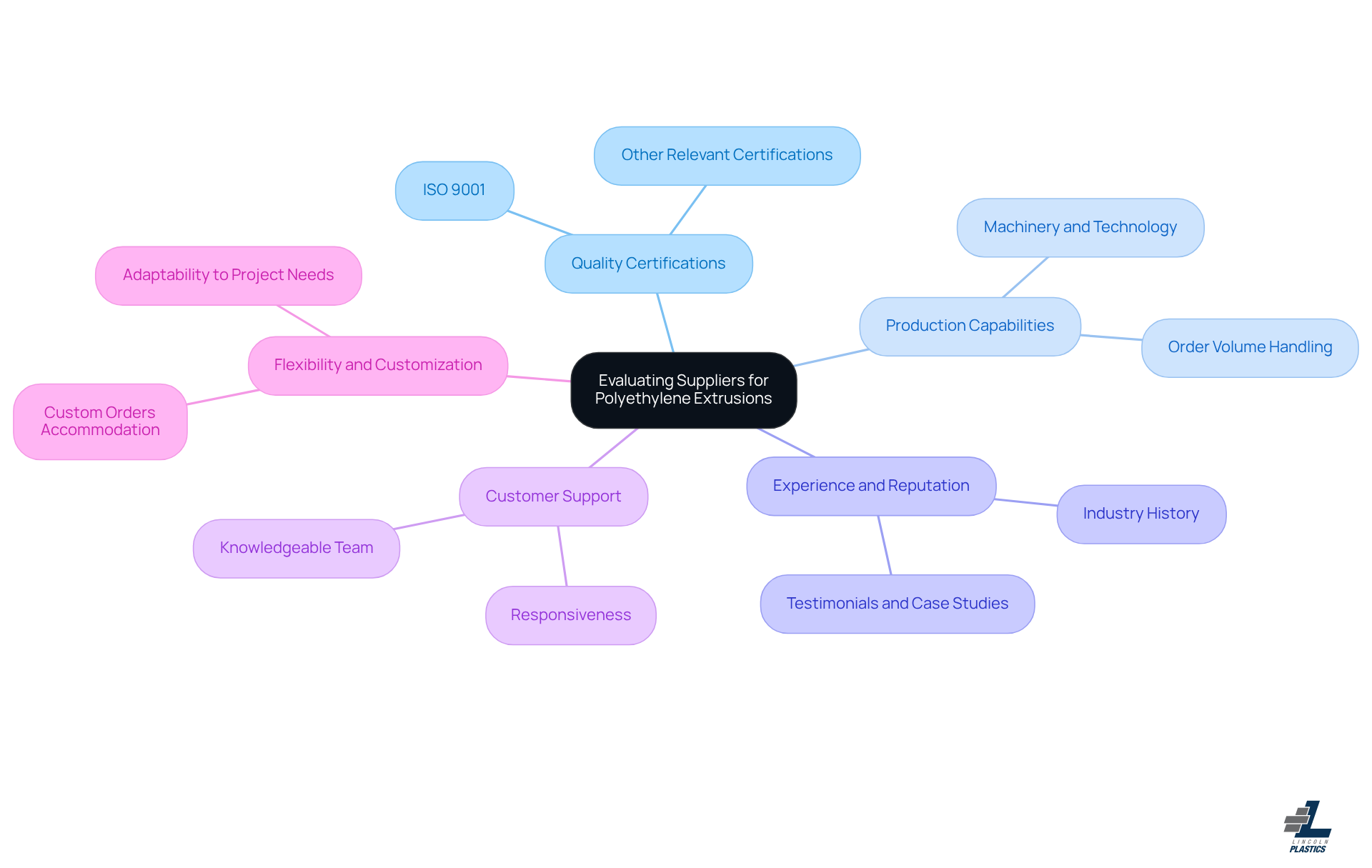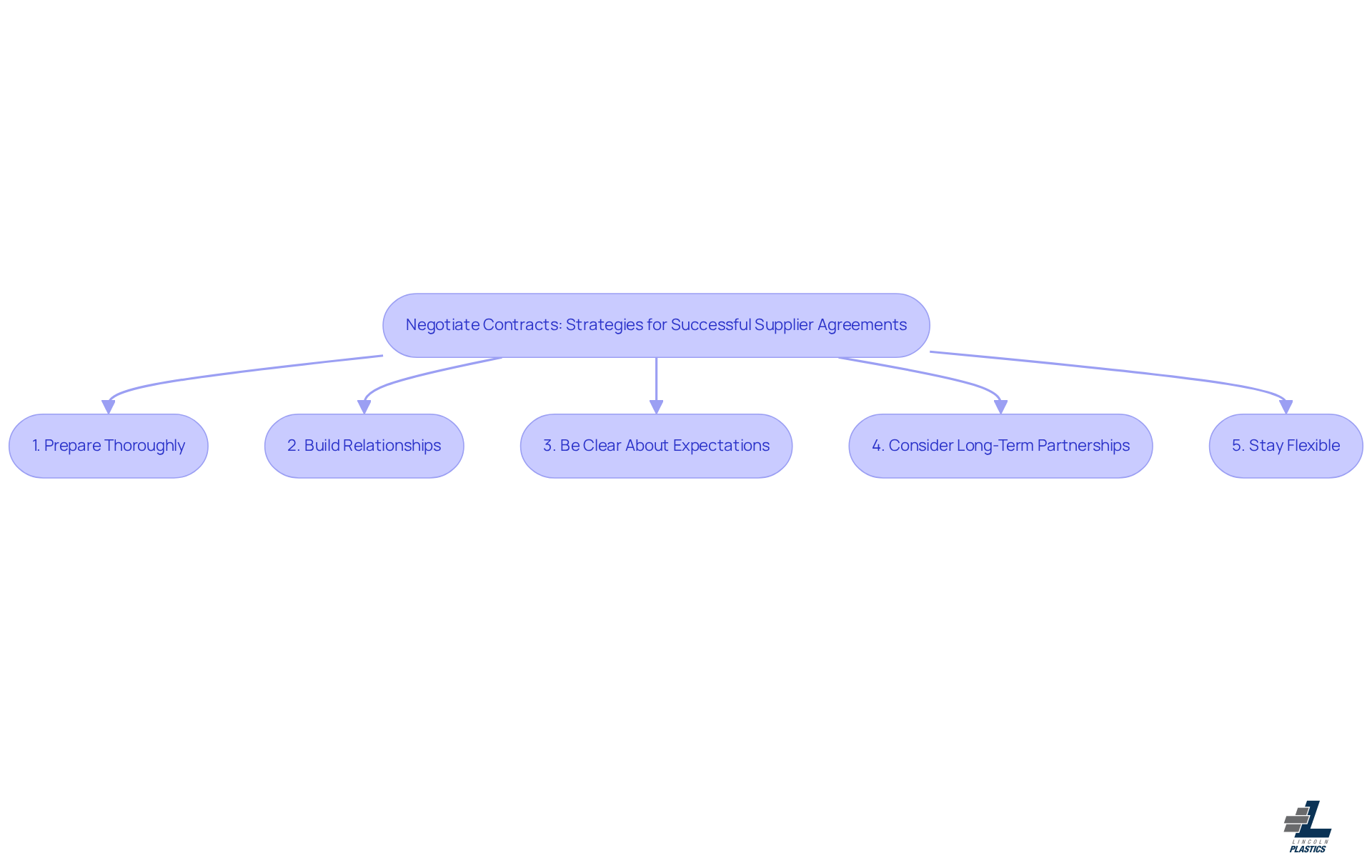
4 Best Practices for Sourcing Polyethylene Extrusions Effectively
Overview
Let’s dive into the world of sourcing polyethylene extrusions! We all know how tricky it can be to find the right suppliers, right? It’s not just about picking any vendor; it’s about evaluating them carefully. Think about it: you want to ensure they have the right quality certifications and production capabilities. These factors can make or break your manufacturing process.
Now, let’s talk about contract negotiation. It’s not just a formality; it’s your chance to set the stage for a successful partnership. You might be wondering how to approach this. Well, having a solid strategy can really help you secure the best terms. It’s all about creating a win-win situation for both parties.
So, what are the key criteria for selecting reliable suppliers?
- Quality certifications are a must
- Don’t overlook their production capabilities either
- You want to partner with someone who can meet your needs consistently
And remember, successful negotiations are crucial! They ensure that you’re not just getting a good deal but also building a relationship that can last. So, as you embark on this journey, keep these strategies in mind. They’ll help you navigate the complexities of sourcing polyethylene extrusions effectively. Ready to take action? Let’s make those partnerships work for you!
Introduction
Manufacturing is changing fast, and polyethylene extrusions are becoming a key player in this evolution. These materials are super versatile, serving industries from automotive to construction. They bring some serious perks, like being lightweight and resistant to chemicals. But as the demand for these extrusions ramps up, so does the challenge of finding the right sources.
You might be asking yourself, how can businesses tackle the tricky parts of supplier evaluation, contract negotiation, and customization? It’s all about making sure you get the most out of polyethylene extrusions. In this article, we’ll explore some best practices that can really shake up your sourcing strategies and boost your operational outcomes. So, let’s dive in!
Understand Polyethylene Extrusion: Fundamentals and Applications
Polyethylene extrusions are a pretty important manufacturing process. It’s all about melting plastic pellets and pushing them through a die to create continuous profiles. Why is this method so popular? Well, it’s versatile, durable, and cost-effective, making it a go-to for many industries. You’ll find it in everything from irrigation pipes to packaging materials, and even custom profiles tailored for specific industrial needs. Lincoln Plastics, for instance, offers flexible profiles and co-extrusion solutions that really stand out.
Now, looking ahead to 2025, the plastic extrusion market is set to grow quite a bit. This growth signals a rising demand for lightweight and durable materials, especially in industries like construction and automotive. The global polyethylene extrusions market is expected to hit around USD 182.91 billion, with polyethylene playing a key role thanks to its fantastic properties.
Understanding the characteristics of this plastic is crucial. It’s all about chemical resistance, flexibility, and knowing the differences between high-density and low-density forms. For example, HDPE is often the go-to for its strength and impact resistance, making it perfect for piping systems. On the flip side, LDPE is prized for its flexibility, which is why you’ll see it used in packaging solutions.
Lincoln Plastics really focuses on quality assurance and customization in plastic extrusion. They make sure their products meet OEM specifications for fit and function. Industry leaders are quick to point out the benefits of this plastic in manufacturing, especially its recyclability and lower environmental impact compared to traditional materials. As sustainability becomes a hot topic in manufacturing, more and more companies are expected to adopt polyethylene extrusions, which aligns with global trends toward eco-friendly practices.
The manufacturing sector is projected to grow at a CAGR of 4.5-6.8% through 2030, which really supports this shift. This trend not only boosts product innovation but also helps the industry commit to reducing its carbon footprint. So, as we move forward, it’s clear that polyethylene is not just a material; it’s a step toward a more sustainable future.

Leverage the Benefits of Polyethylene Extrusions for OEM Needs
When it comes to manufacturing, polyethylene extrusions really shine for OEMs. They’re lightweight, super resistant to chemicals, and can be created in all sorts of shapes using polyethylene extrusions. This makes them perfect for everything from automotive parts to construction materials and even consumer goods. For example, using HDPE in piping systems not only cuts down on weight but also makes installation a breeze.
Now, let’s talk about Lincoln Plastics. Their custom flexible cord covers and cable management solutions are game-changers for workplace safety. By organizing and protecting cords, they help eliminate hazards that could lead to accidents. Plus, the ability to personalize profiles means OEMs can create unique products tailored to specific customer needs, giving them a leg up in the competitive market.
Imagine the benefits:
- Reduced production costs
- Better product performance
- Keeping quality control tight
- Manufacturing precise
Sounds good, right? So, why not leverage these advantages and see how they can transform your operations?
Evaluate Suppliers: Criteria for Reliable Polyethylene Extrusion Partners
When you're on the hunt for suppliers for polyethylene extrusions, there are a few key things you really want to keep in mind:
-
Quality Certifications: First off, check if the provider has the right certifications, like ISO 9001. This shows they’re committed to quality management standards, which means they’re likely to meet industry requirements consistently.
-
Production Capabilities: Next, think about whether they can handle your specific order volume and complexity. Take a good look at their machinery, technology, and overall production processes to make sure they can meet your needs effectively.
-
Experience and Reputation: It’s also a good idea to dig into the provider's history in the industry. Look for testimonials and case studies that showcase their reliability and quality of service. You’ll often find that successful collaborations come from providers with a solid track record.
-
Customer Support: Don’t underestimate the importance of a responsive and knowledgeable customer service team. Good communication can help resolve issues quickly, making your sourcing experience much smoother.
-
Flexibility and Customization: Finally, assess how willing the provider is to accommodate custom orders and adapt to changing project needs. This flexibility is crucial for meeting unique specifications and ensuring your project’s success.
By keeping these criteria in mind, you can build strong partnerships with reliable partners in plastic manufacturing, especially those focused on polyethylene extrusions. This not only boosts your operational efficiency but also enhances your product quality. So, what do you think? Ready to find the right supplier?

Negotiate Contracts: Strategies for Successful Supplier Agreements
Negotiating contracts with suppliers of polyethylene extrusions can feel a bit daunting, right? But with a strategic and well-prepared approach, you can really enhance your negotiation outcomes. Let’s dive into some effective strategies that can help you out:
-
Prepare Thoroughly: Before you even step into discussions, take some time to understand your specific needs and the market landscape. Get familiar with average pricing and industry terms; this knowledge can really strengthen your position. Remember what Brian Koslow said: "During a discussion, it would be wise not to take anything personally." If you can keep personalities out of it, you’ll spot opportunities more clearly.
-
Build Relationships: It’s all about connections! Fostering a strong relationship with your suppliers can really change the game during negotiations. Suppliers are often more willing to offer favorable terms to partners they trust. Active listening is key here—just like in the case study "The Power of Active Listening." It helps you build rapport and uncover any underlying concerns.
-
Be Clear About Expectations: Make sure you clearly communicate your requirements, like quality standards, delivery timelines, and payment terms. This clarity helps avoid misunderstandings and sets a solid foundation for your partnership. And don’t forget, understanding objections is just as important as reaching an agreement; it ensures both parties' needs are met.
-
Consider Long-Term Partnerships: If your needs are ongoing, think about negotiating terms that reflect a commitment to a long-term partnership. This can lead to better pricing and enhanced service for both sides in the long run. As noted in the case study "Understanding True Motivations," knowing what the other party truly wants can lead to win-win solutions.
-
Stay Flexible: Be open to alternative solutions that might work for both parties, like bulk purchasing agreements or shared risk arrangements. This flexibility can unlock opportunities for mutually beneficial results, making the whole negotiation experience smoother. Just a heads up—rigid thinking can really get in the way of successful discussions, so keep an open mind!
By putting these strategies into practice, you can navigate supplier negotiations more effectively and build relationships that contribute to your operational success. And hey, watch out for common pitfalls, like undervaluing yourself, to keep your bargaining power strong and ensure you get favorable outcomes.

Conclusion
So, let’s wrap this up! Understanding and sourcing polyethylene extrusions isn’t just a technical task; it’s a game-changer for optimizing your manufacturing processes and ensuring top-notch product quality. We’ve seen how versatile, durable, and cost-effective polyethylene can be across various industries. By focusing on best practices, you can really tap into the benefits of polyethylene to boost your operations and keep up with the ever-changing market demands.
We’ve touched on some key insights, like the fundamental characteristics of polyethylene and how it meets OEM needs. Plus, we can’t forget about the importance of evaluating suppliers and negotiating effectively. Building strong partnerships with reliable extrusion suppliers not only enhances operational efficiency but also aligns with the growing push for sustainability in manufacturing.
Ultimately, embracing these best practices for sourcing polyethylene extrusions can lead to some serious improvements in product performance and cost management. As industries shift their focus toward eco-friendly solutions, investing your time and energy into understanding and implementing these strategies will be crucial. It’s all about staying competitive and setting yourself up for long-term success in the market. So, why not start today?
Frequently Asked Questions
What is polyethylene extrusion?
Polyethylene extrusion is a manufacturing process that involves melting plastic pellets and pushing them through a die to create continuous profiles.
Why is polyethylene extrusion popular in various industries?
It is popular because it is versatile, durable, and cost-effective, making it suitable for a wide range of applications, including irrigation pipes, packaging materials, and custom profiles.
What is the expected growth of the polyethylene extrusions market by 2025?
The global polyethylene extrusions market is expected to reach around USD 182.91 billion by 2025, driven by a rising demand for lightweight and durable materials, particularly in the construction and automotive industries.
What are the key characteristics of polyethylene?
Key characteristics of polyethylene include chemical resistance, flexibility, and the differences between high-density polyethylene (HDPE) and low-density polyethylene (LDPE). HDPE is known for its strength and impact resistance, while LDPE is valued for its flexibility.
How does Lincoln Plastics ensure quality in their polyethylene extrusions?
Lincoln Plastics focuses on quality assurance and customization, ensuring that their products meet OEM specifications for fit and function.
What are the environmental benefits of polyethylene compared to traditional materials?
Polyethylene is recyclable and has a lower environmental impact, which makes it an attractive option as sustainability becomes a priority in manufacturing.
What is the projected growth rate for the manufacturing sector through 2030?
The manufacturing sector is projected to grow at a compound annual growth rate (CAGR) of 4.5-6.8% through 2030.
How does the trend towards sustainability affect the use of polyethylene?
As sustainability becomes increasingly important, more companies are expected to adopt polyethylene extrusions, aligning with global trends toward eco-friendly practices and reducing carbon footprints.
List of Sources
- Understand Polyethylene Extrusion: Fundamentals and Applications
- The Extrusion Industry in 2025: Innovations, Trends, and Opportunities (https://plextrusions.com/extrusion-blog/the-extrusion-industry-in-2025-innovations-trends-and-opportunities)
- Plastics Extruded Market Size to Worth USD 259.21 Billion by 2034 (https://globenewswire.com/news-release/2025/10/08/3163506/0/en/Plastics-Extruded-Market-Size-to-Worth-USD-259-21-Billion-by-2034.html)
- Why Plastic Profile Extrusion Is Key to Product Innovation (https://paulmurphyplastics.com/industry-news-blog/why-plastic-profile-extrusion-is-key-to-product-innovation)
- Evaluate Suppliers: Criteria for Reliable Polyethylene Extrusion Partners
- 5 Important Things for Life Sciences Companies to Consider | MasterControl (https://mastercontrol.com/gxp-lifeline/quality-inspiration)
- Medical Extrusion Technologies Earns Quality ISO (https://mpo-mag.com/breaking-news/medical-extrusion-technologies-earns-quality-iso)
- (https://jinenplastic.com/blog/the-importance-of-iso9001-certification-in-plastic-manufacturing)
- 75 Inspirational Manufacturing Quotes That Will Boost Your Business — Navigate Content (https://navigatecontent.com/blog/inspirational-manufacturing-business-industry-quotes)
- Top 10 Quality Control Quotes to Inspire Your Team (https://movley.com/blog/top-10-quality-control-quotes-to-inspire-your-team)
- Negotiate Contracts: Strategies for Successful Supplier Agreements
- Negotiation Quotes — 25 Legendary Quotes Full of Wisdom (https://procurementtactics.com/negotiation-quotes)


